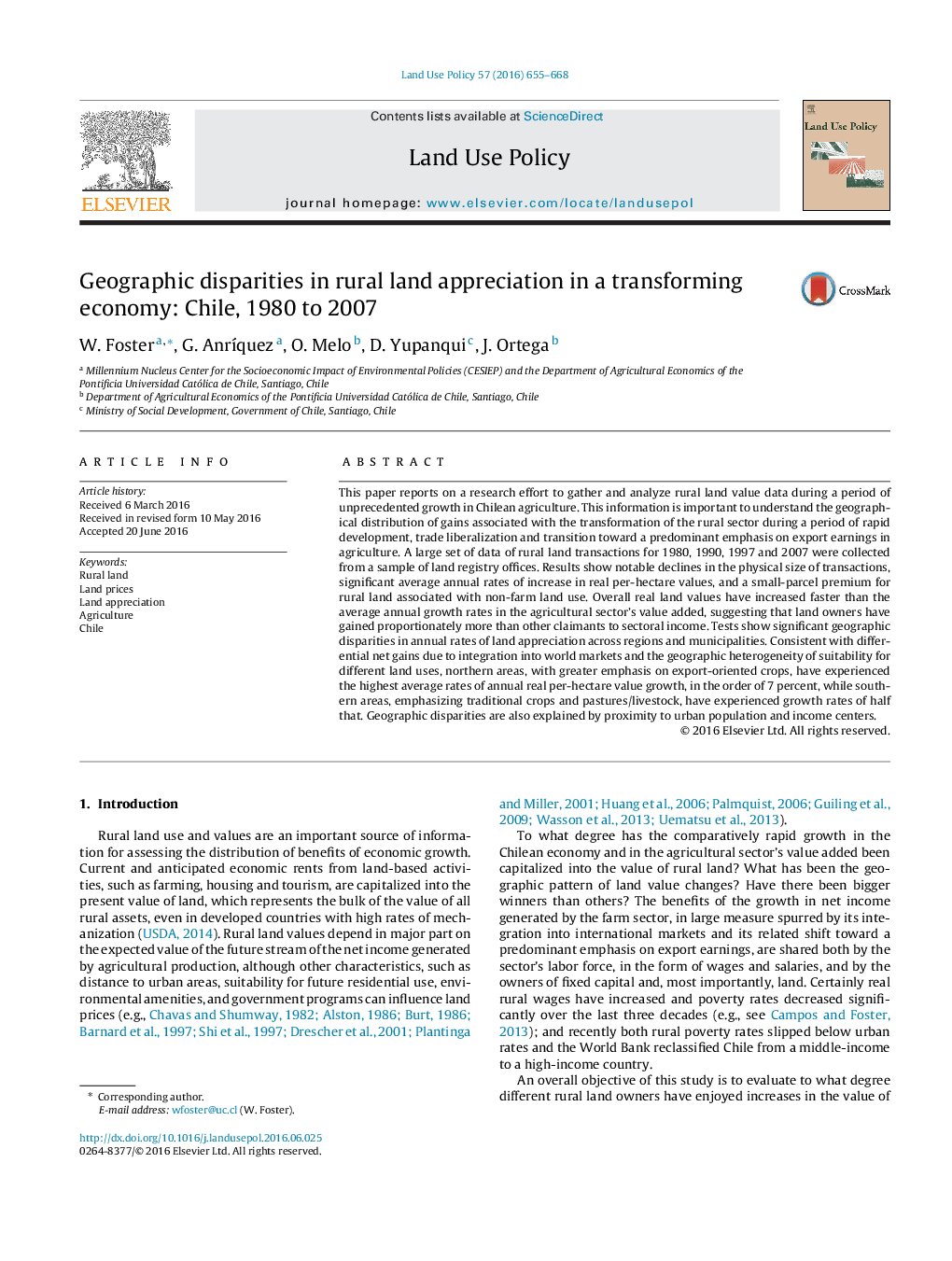| Article ID | Journal | Published Year | Pages | File Type |
|---|---|---|---|---|
| 6547111 | Land Use Policy | 2016 | 14 Pages |
Abstract
This paper reports on a research effort to gather and analyze rural land value data during a period of unprecedented growth in Chilean agriculture. This information is important to understand the geographical distribution of gains associated with the transformation of the rural sector during a period of rapid development, trade liberalization and transition toward a predominant emphasis on export earnings in agriculture. A large set of data of rural land transactions for 1980, 1990, 1997 and 2007 were collected from a sample of land registry offices. Results show notable declines in the physical size of transactions, significant average annual rates of increase in real per-hectare values, and a small-parcel premium for rural land associated with non-farm land use. Overall real land values have increased faster than the average annual growth rates in the agricultural sector's value added, suggesting that land owners have gained proportionately more than other claimants to sectoral income. Tests show significant geographic disparities in annual rates of land appreciation across regions and municipalities. Consistent with differential net gains due to integration into world markets and the geographic heterogeneity of suitability for different land uses, northern areas, with greater emphasis on export-oriented crops, have experienced the highest average rates of annual real per-hectare value growth, in the order of 7 percent, while southern areas, emphasizing traditional crops and pastures/livestock, have experienced growth rates of half that. Geographic disparities are also explained by proximity to urban population and income centers.
Related Topics
Life Sciences
Agricultural and Biological Sciences
Forestry
Authors
W. Foster, G. AnrÃquez, O. Melo, D. Yupanqui, J. Ortega,
